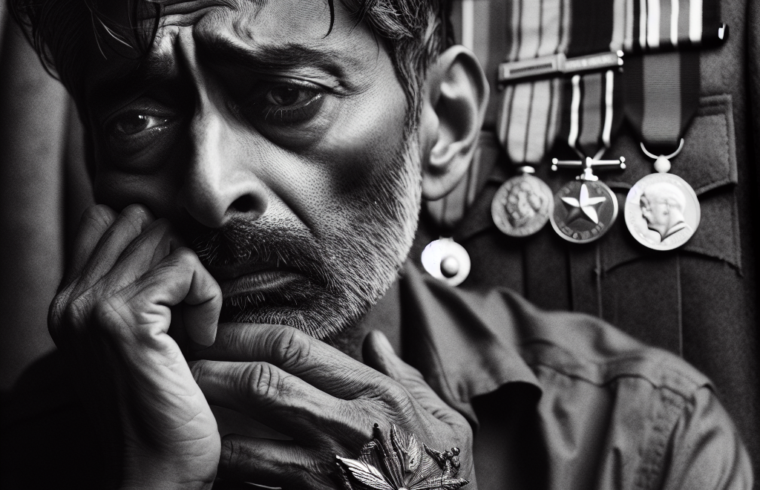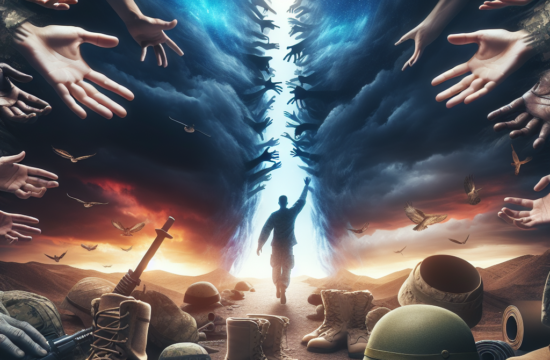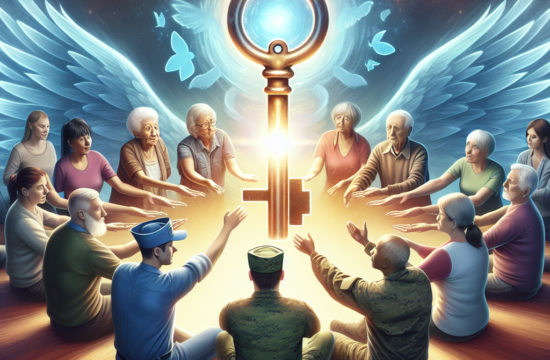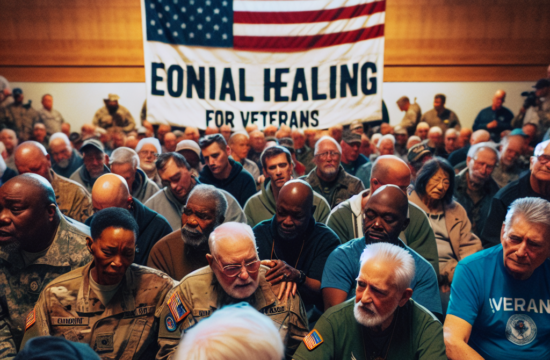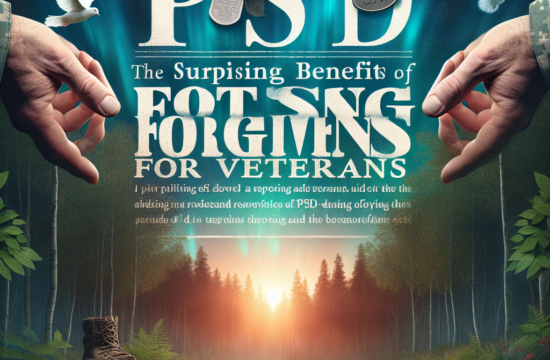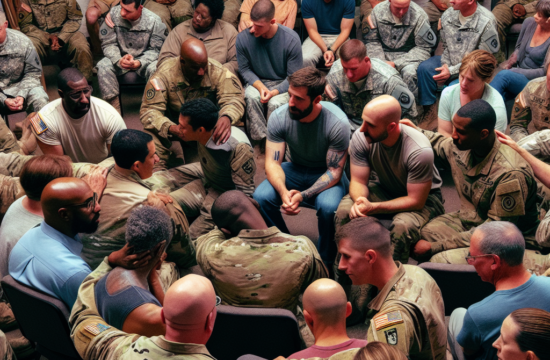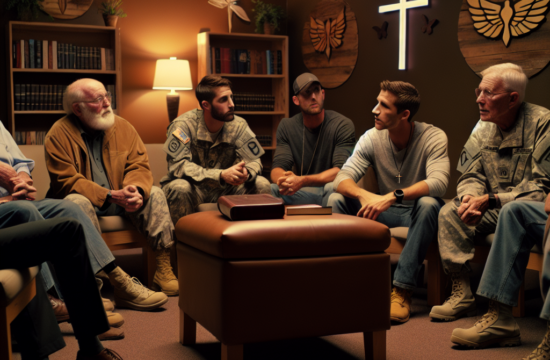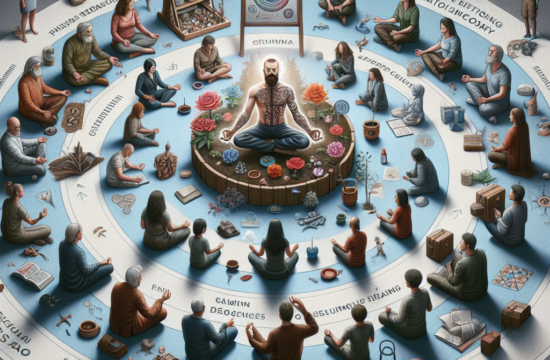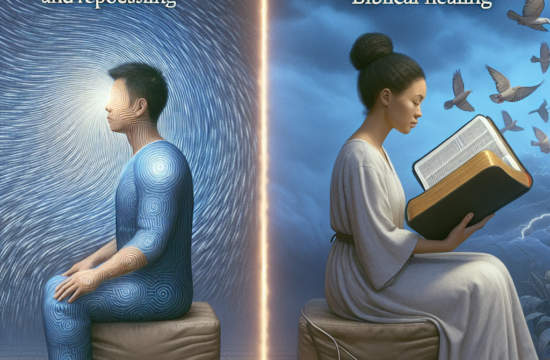==> Thank you for reading this post! Click Here If you are looking for support and Victory over PTSD.
Understanding Post-Traumatic Stress Disorder (PTSD)
What is PTSD?
So let me tell you, PTSD is something that every veteran dreads hearing about but knows deep down could be part of their reality. It’s that invisible wound that lingers long after the battle is over. People think it’s just about being shocked or scared, but it’s so much more. PTSD can affect your daily life, relationships, and overall mental health. Understanding this condition is the first step towards healing.
I remember sitting with my fellow soldiers, trying to wrap our heads around what we’ve been through. The things we saw and did can haunt you if you aren’t careful. It’s not just about combat; many veterans experience it after transitioning back to civilian life. The sudden halt of adrenaline and the chaos can leave a massive void.
Recognizing the symptoms like flashbacks, nightmares, and anxiety is crucial. Owning up to it doesn’t just help you; it allows others to see they aren’t alone. Sharing experiences fosters understanding and reminds us that healing is possible.
Impacts of PTSD
The impacts of PTSD can ripple through every activity in your life. It’s not just a mental thing; it shows up physically, too. You might find yourself jumping at loud noises or avoiding certain places altogether because they trigger memories. I had to learn to navigate life differently, finding workarounds so I didn’t get overwhelmed.
I remember a day filled with loud fireworks that sent me spiraling. I ended up alone in my room, feeling trapped in my own body. This isn’t just a personal battle; it’s something many veterans face, and it’s proof that the scars from service are more than skin deep.
This impact isn’t just felt by the veteran. Families endure this pain as well. It can strain relationships and create misunderstandings. That’s why talking about it – raw and real – helps bring light to the darkness. It’s about acknowledging the truth together and finding paths for both the veterans and their families.
Seeking Help for PTSD
Honestly, the process of seeking help can feel daunting. The first step is admitting you need it, and believe me, that’s no walk in the park. I remember feeling ashamed, worried about the stigma attached to opening up. But I couldn’t keep carrying the weight alone; I had to reach out.
Therapies like Cognitive Behavioral Therapy (CBT) or group sessions can be eye-openers. They enable a safe space to discuss feelings without judgment. Plus, learning new coping techniques is super helpful. I found solace in connecting with other veterans who shared my struggle; it felt powerful to not be alone.
Don’t ignore the benefits of medication either, if needed. It’s not a fail on anyone’s part; it’s just a tool to help you regain control. Ultimately, deciding to seek help is a brave step toward reclaiming your life.
The Effects of Military Sexual Trauma
Defining Military Sexual Trauma (MST)
Military Sexual Trauma is an area that often gets swept under the rug, and honestly, that’s just plain wrong. It involves any sexual harassment or assault experienced during service, and it leaves deep emotional scars. This isn’t just a personal narrative; it’s a collective struggle we need to confront.
When I first heard the term, it felt uncomfortable. It left me questioning my own experiences and dreading the idea of confronting them. MST can happen to anyone, regardless of gender. The silence around it fuels a culture of shame that needs to be broken.
If we don’t have these difficult conversations, how will we ever heal as a community? Discussing MST openly can lead to more awareness, resources, and hopefully creates a supportive environment for each other. Healing begins with acknowledgment.
Consequences of MST
The aftermath of MST can be devastating and far-reaching. Many individuals experience PTSD, depression, and anxiety as a result. It can feel like an invisible anchor weighing you down while trying to float back to normalcy. I know many veterans who struggled long after their service was complete.
Building trust becomes a significant challenge. Relationships suffer; it’s not just the individual affected but everyone around them. Friends and family don’t understand what they can’t see, leading to isolation. For me, reaching out to support groups became a lifeline.
Moreover, there’s the bureaucratic side that infuriates many. Filing complaints or seeking help for MST can feel like a battle within a battle, which is exhausting. Speaking up should empower us, not inhibit us. Ultimately, we have to find ways to support one another in overcoming these challenges.
Finding Resources and Support
If you or someone you care about is dealing with the fallout of MST, it’s essential to find resources that resonate. The VA provides resources specifically tailored for those affected by MST, and while it might take time to get connected, it’s worth the wait to receive proper assistance.
Networking with other veterans can be hugely beneficial. Sharing stories in a safe, judgment-free zone creates an opportunity for healing. I still lean on a few close friends from my service days; it helps to remind me that I’m not alone in this journey.
Ultimately, it’s about finding the blend of professional help alongside community support. Each path is unique, and your healing is personal. Don’t hesitate to take the road less traveled if it promises peace.
Coping Mechanisms for Emotional Trauma
Recognizing Triggers
Recognizing your triggers can be a game-changer. It’s like putting up road signs for yourself, letting you know when to slow down or steer clear. I’ve spent plenty of time figuring out what sets me off. Honestly, it can be surprising what can elicit strong emotions.
Whether it’s a sound, smell, or even a specific place, being aware of these is the first step to managing your reactions. When I learned what my triggers were, it allowed me to prepare myself and, if feasible, avoid situations that could lead to an emotional breakdown.
It’s like creating a personal map of your own emotional landscape. In knowing where the potholes are, you start to navigate the road better. Keeping a journal serves as a fantastic tool for tracking these experiences. Pattern recognition can help both in understanding and in seeking help on how to deal with them.
Get Support and Help with Recovery! Visit us for more Information and Support
Finding Healthy Outlets
Finding healthy outlets for your emotions is essential. After serving, I realized I had a lot of pent-up energy and feelings that needed an exit route. It’s vital to channel those emotions positively, whether it’s through exercise, arts, or volunteering.
Exercising became my coping mechanism, turning anger into energy. I started hitting the gym, and soon, it wasn’t just about getting fit; it became a ritual that cleared my mind and boosted my mood. It can be anything that gets you moving—find your groove!
A lot of veterans also find peace in creative endeavors. Whether it’s painting, writing, or music, these activities help express feelings that words sometimes can’t capture. Remember, whatever works for you is valid; just keep exploring until you find it.
Building a Support Network
Building a support network is crucial. You don’t have to carry these burdens alone! There’s power in shared experiences, and surrounding yourself with support is vital. I found friends in unexpected places, from support groups to online forums. We all understood each other’s struggles.
Don’t be afraid to reach out; it might seem tough at first. Friends or fellow veterans can relate to your struggle. Plus, having a diverse network that includes family, friends, and professionals provides an excellent safety net to fall back on during hard times. Do whatever it takes to cultivate these relationships!
Ultimately, remember that it’s perfectly alright to ask for help. Everyone needs a buddy sometimes. Whether it’s sharing coffee, a laugh, or just showing up, those connections = make a world of difference in healing together.
Embracing the Journey to Recovery
Taking Small Steps
When it comes to emotional trauma recovery, one of the most significant lessons I’ve learned is to take it slow. Healing isn’t a sprint; it’s more like a casual hike in the great outdoors. Sometimes, you’ll stumble. It’s natural!
Realizing that progress comes in little increments helped me calm that inner critic for rushing through. A day where I felt a little lighter in spirit or able to share a laugh was a victory, no matter how small. Celebrate those tiny achievements; they add up!
Moreover, don’t set rigid timelines for yourself. Instead of focusing on where you feel you should be, look at your own pace. Everyone’s path is different, and patience is crucial as you work through your journey.
Learning from Past Experiences
In my healing journey, I’ve learned the value of reflecting on my past experiences. It’s not about playing the blame game; it’s about understanding how far I’ve come and identifying what triggered certain feelings. Remembering where I started can give me a sense of hope for the future.
Each experience, good or bad, has a lesson hidden within. Embracing these lessons—rather than pushing them aside—can provide fuel for growth. I often reflect on my time in service, finding ways it shape who I am in a positive light.
Sharing those experiences with others not only helps you but can provide encouragement to someone else navigating similar paths. It’s all about creating inspiration from trauma. That’s how we build resilience and strength together.
Continuing the Recovery Process
Finally, embracing that the recovery process is never “finished” is vital. It evolves as you do! That’s a significant lightbulb moment for me – accepting that it’s okay to have ups and downs. Each day brings new challenges, and finding peace is an ongoing journey.
Keep looking for resources, listening to your needs, and reaching out when needed. There’s a big world out there, and many individuals are eager to help fellow veterans navigate these waters. There’s strength in community!
Ultimately, while the process may have its mountains to climb, it’s a worthwhile journey. Gathering strength and inspiration along the way makes the ride much more manageable, and the view from the top is remarkable.
Frequently Asked Questions
1. What is PTSD, and how does it relate to military service?
PTSD, or Post-Traumatic Stress Disorder, is a mental health condition triggered by experiencing or witnessing traumatic events. Many veterans experience PTSD due to their combat experiences or other stressful situations encountered during military service.
2. How can I identify if I’m suffering from emotional trauma?
Common signs of emotional trauma include intrusive thoughts, flashbacks, avoidance of triggers, and emotional numbness. If you notice these signs affecting your daily life, it’s essential to reach out for help.
3. What resources are available for veterans dealing with MST?
Veterans can seek help through the VA, which provides specific resources for Military Sexual Trauma support. Additionally, connecting with veteran support groups can offer a sense of community and shared understanding.
4. Are coping mechanisms always effective for emotional trauma?
Coping mechanisms differ from person to person. What works for one individual may not work for another, which is alright. It’s all about finding healthy outlets that help you manage emotions positively.
5. How can I support a friend or family member dealing with emotional trauma?
Listening and validating their feelings without judgment is key. Encourage them to seek help if needed, and remind them they aren’t alone. Continuous support and understanding can make a significant difference in their recovery journey.

